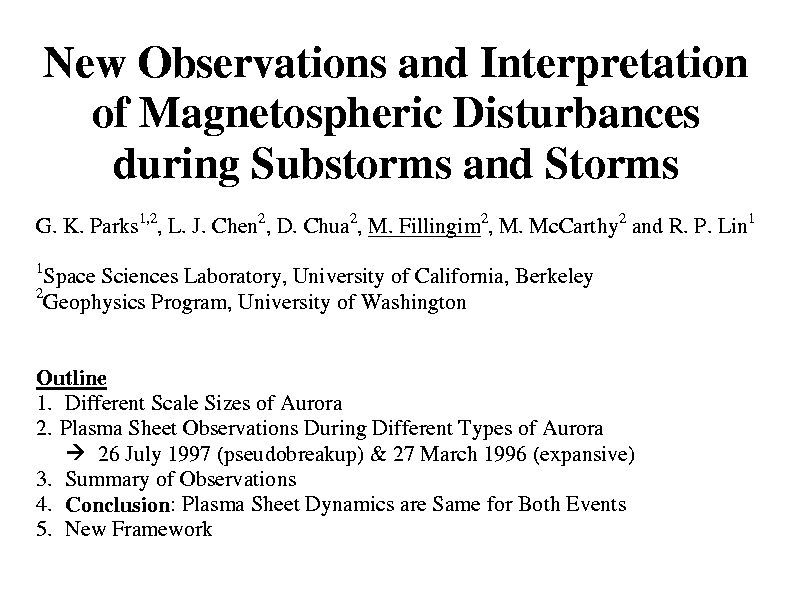
G. K. Parks1,2, L. J. Chen2, D. Chua2, M. Fillingim2, M. McCarthy2, and R. P. Lin1
1Space Sciences Laboratory, University of California,
Berkeley
2Geophysics Program, University of Washington, Seattle
Major magnetospheric energy deposition into the ionosphere occurs primarily during substorms and storms. We present new results of a systematic study of substorms and storms that include various global auroral forms and simultaneous plasma measurements made in the near earth geomagnetic tail. This study reveals that the dynamics of the magnetosphere consists of a continuum of disturbance scale sizes and intensity levels. These disturbances accelerate ions (electrons) to MeV (hundreds of keV) energies, occur at various phases of substorms and even during relatively quiet period of northward IMF. The criteria for triggering these magnetospheric disturbances appear to depend only on the local plasma properties existing in the magnetosphere. The actual mechanisms responsible for the trigger is not yet known, but data show that magnetic field variations have dB/B >>1, indicating nonlinear processes are active. Power spectral estimates further indicate that a substantial power exists up to the local ion cyclotron frequency and beyond indicating kinetic physics is required for understanding these observations.

Return to Matt's trip to India
Return to Matt's Publications and Presentations page
Return to Matt's Home Page